Madeira’s Terraced Landscape or Poios
Madeira’s Terraced Landscape or Poios
Suspended gardens, terraces and stone walls are man-made constructions. These ensure farmers have land to cultivate even on steep hills and in spite of environmental limitations. Moreover, these terraced landscapes provide inhabitants throughout all mountainous regions in the world with farmland.
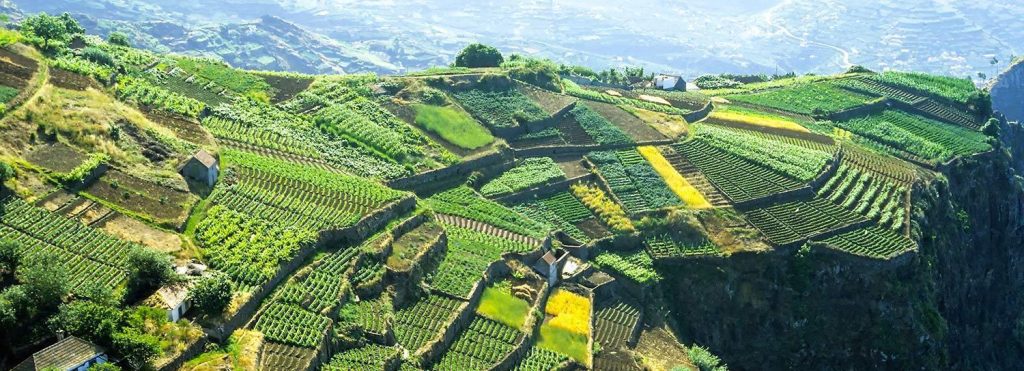
Here on Madeira, terraced plots are part of the scenery. These suspended gardens are attractive to tourists and locals alike. Enjoy looking at them!
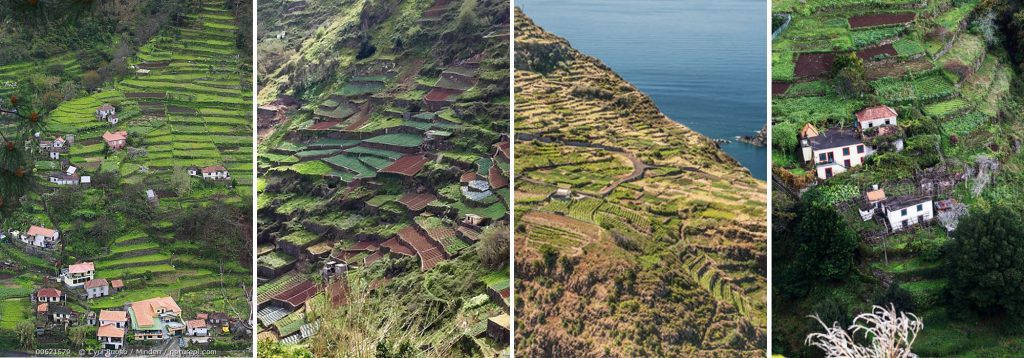
Origin of Terraced Landscape on Madeira
Building these stone walls transformed Madeira as far back as the fifteenth century. At the time, settlers changed the rugged landscape of Madeira. They turned it from a natural one with dense Laurisilva forest to a tamed one. Early inhabitants transformed their surroundings to create an agricultural landscape with small flattish soil parcels.
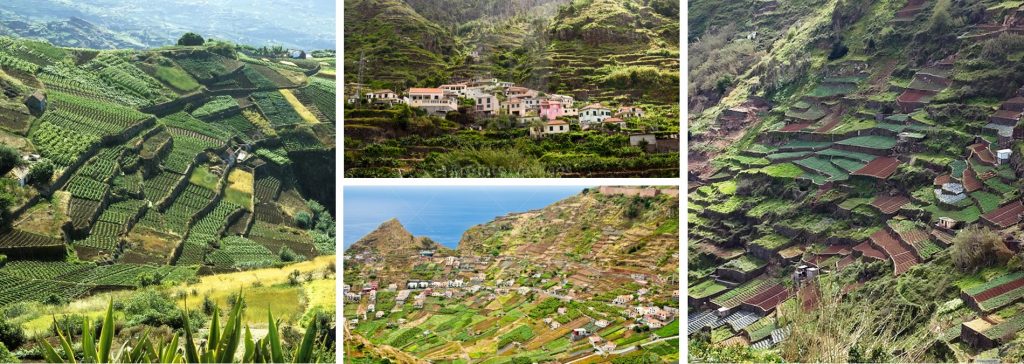
That is to say, the population laboriously build terraced plots from sea level to about 600 meters in altitude. Hence, these dry-stone terraces, or poios as they are called locally, provide space to grow food and crops.
Labour Intensive Construction
For example, Portuguese agronomist Joaquim Vieira Natividade described the terrace-building this way:
And the man, the dwarf, attacked the mountain. During centuries, he did not stop the hard work with pickax and lever, and on the price of lives, sweat and blood carved gigantic stairs into the mountain without that the steep escarpments, the profundity of the chasms or the vertigo of the abysms stopped the steps of the giant. This monument [is] unique in the world, because in no other part, with this big amplitude, so much human force was used to conquer [cultivate] the land. (Natividade 1954, 31)
Particular Building Skills and Knowledge
These terraced landscapes have since enchanted and surprised visitors. Above all, these poios contribute to the biodiversity and cultural identity of Madeira. Furthermore, these terraces are a material expression of a certain wisdom passed from generation to generation. Original dry-stone walls do not use cement. The building, maintenance and reparation knowledge is becoming scares. In conclusion, less and less Madeirans know how to repair and recover original stone walls “the old way”!
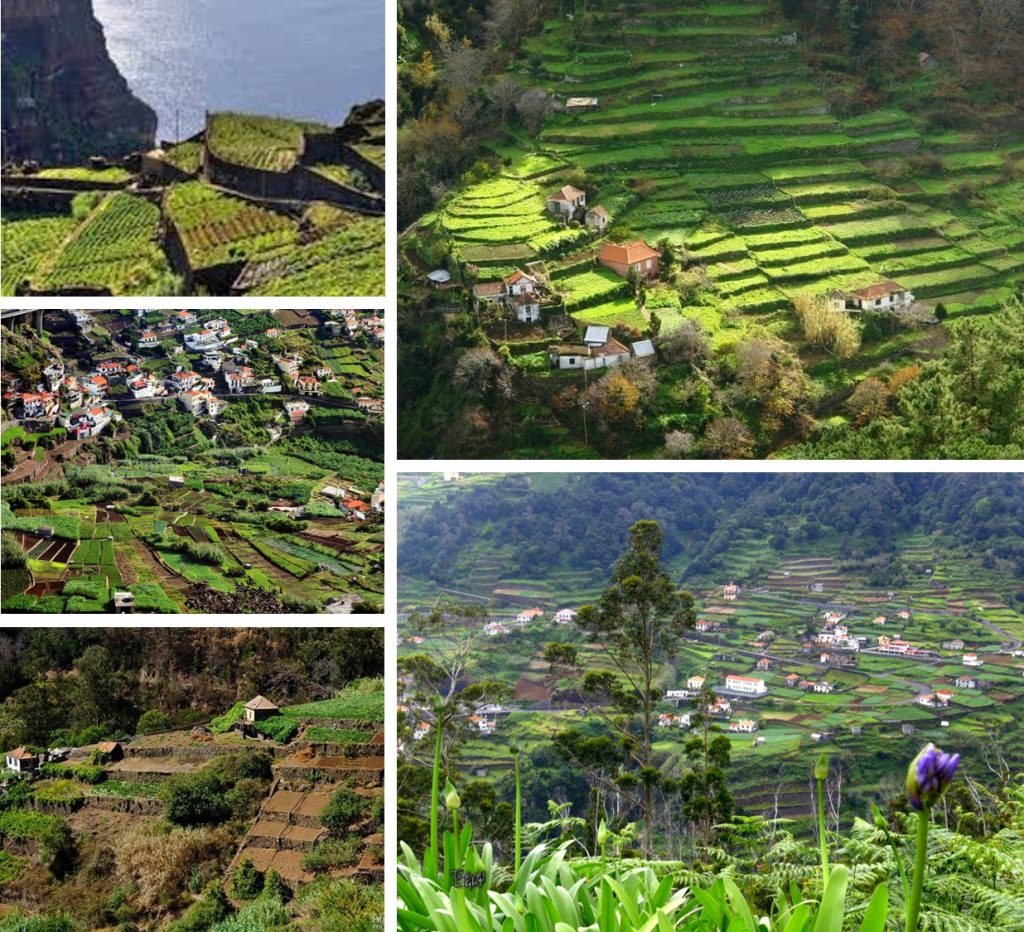
Abandonned Terraces
Hence, while driving around the island, one can witness the abandonment of terraces, mainly on high or extremely steep mountain slopes, mainly those with difficult access.
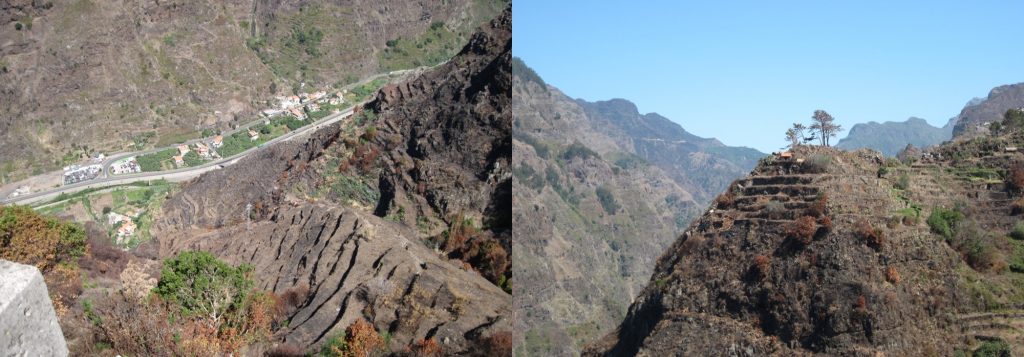
Furthermore, these poios fulfill invaluable services to the communities. These terraces prevent soil washouts during heavy or flash rain falls.
Taming the Environment
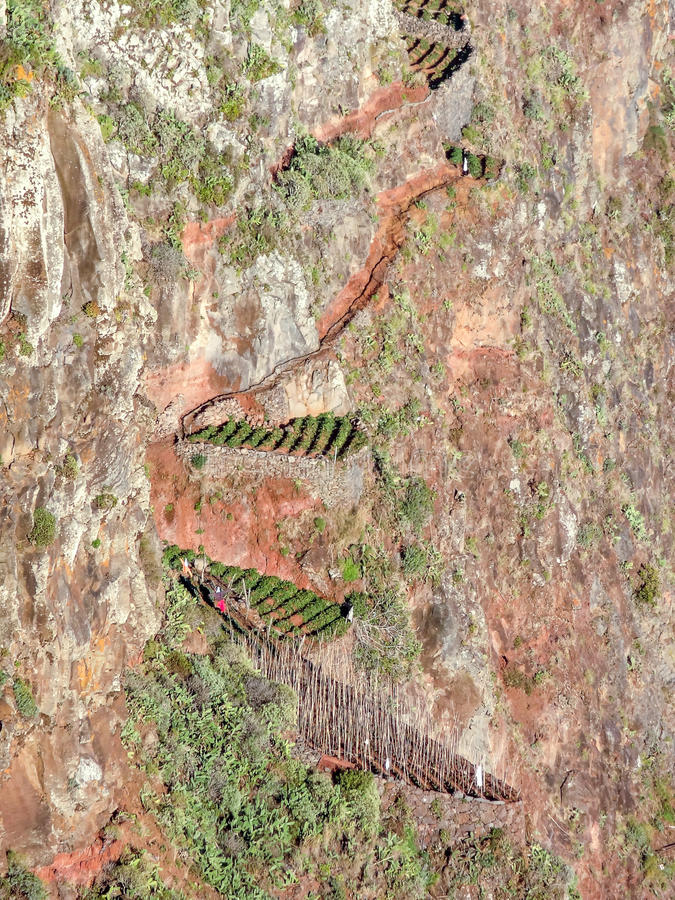
Madeira portrays clearly the mutual adaptation between inhabitants and the rugged land they live on. This is particularly highlighted with the poios and with the levada irrigation channels.

Sources
- Natividade, Joaquim Vieira (1954). Madeira: A Epopeia Rural. Funchal: Junta Geral do Distrito Autónomo do Funchal.
- World Congress Terraced Landscape
- Sandra Kiesow e Hans-Rudolf Bork, « Agricultural terraces as a proxy to landscape history on Madeira island, Portugal », Ler História [Online], 71 | 2017, posto online no dia 02 janeiro 2018, consultado no dia 23 setembro 2019. URL : http://journals.openedition.org/lerhistoria/2912 ; DOI : 10.4000/lerhistoria.2912